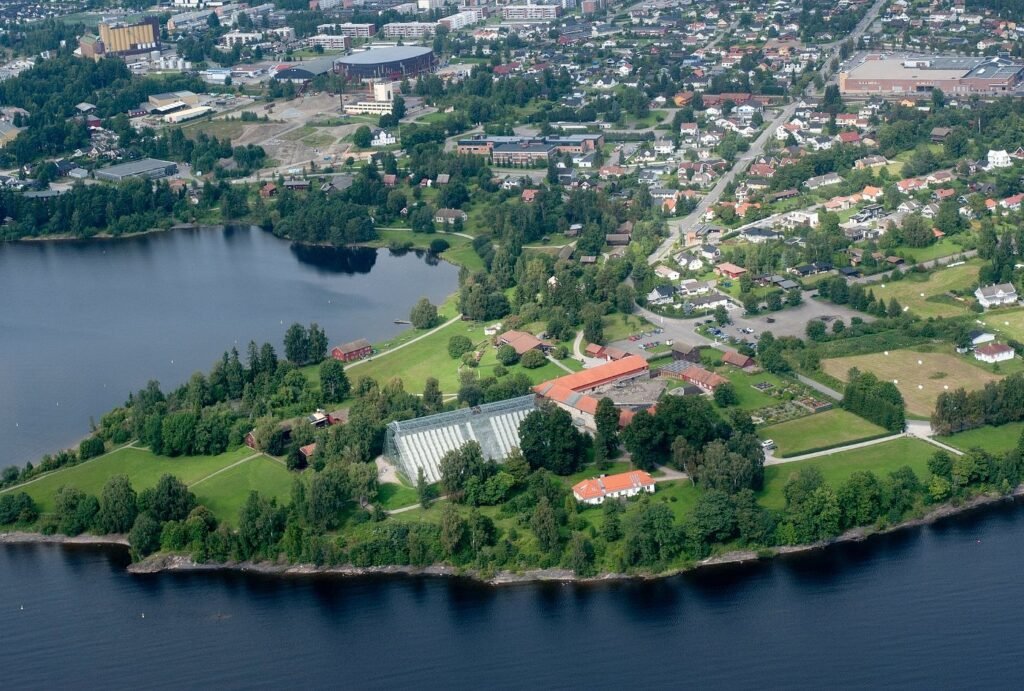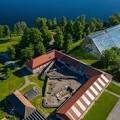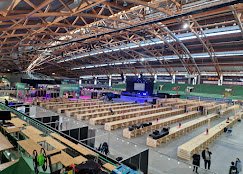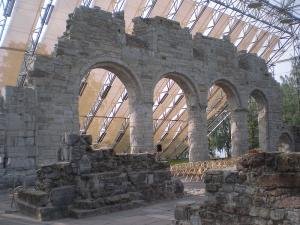Hamar is a Norwegian city and municipality located in the Innlandet region. Hamar is the 258th Norwegian municipality in terms of area. The city is located in Norway’s largest lake – Mjøsa. Area 351 km², population 31 thousand, density 81 people/km².

- The modern city began as an 18th century trading centre on Mjosa. After years of disputes over the location, the king finally signed a deed on 26 April 1848 to establish Hamar on the Storhamar and Holset farms, along the banks of Mjøsa. The new city covered 400 m², which is the equivalent of 40 ha today. A central square, three public parks and a site for a church were created in the city. The original plan has been implemented to this day, despite fires and floods that have plagued the residents.
- Hedmark Museum, located on Domkirkeodden, is an important historical site in Hamar. It houses an open-air museum with the remains of a medieval church, in a protective glass enclosure, fragments of the bishop’s fortress and a collection of old farmhouses. The museum is a combination of a medieval, ethnological and archaeological and architectural museum, receiving awards for its approach to preservation and exhibition.

- The museum also houses a large photographic archive, the only one in the Hedmark region. The centre of Hamar is the pedestrian zone in the city centre, libraries, cinemas and the farmers’ market on Stortorget (large square) on the western side.
- Hamar is also known for its indoor speed skating track and sports hall, Olympia Hall, better known as Vikingskipet, or Viking ship, due to its shape. It was built to host the speed skating competitions at the 1994 Winter Olympics, which were held near Lillehammer. It hosted the World Championships in 1993. Vikingskipet Arena was also used in the winter of 2007 for the Rally Norway, the second round of the World Rally Championship. It was hosted by the second largest computer world. In addition, the city is also home to the Olympic Amphitheatre, which hosted the figure skating performances at the games and won the gold medal by a Ukrainian woman.

- Historical curiosities. The city of Hamar existed in these areas over 1500 years ago. Known records mention an important metropolis from that period, which was called Aker. The metropolis played an important role for over 500 years, until the 10th century AD. Traditionally, Christianization had a special influence on development. The construction of a cathedral in the city, then a bishop’s castle and a fortress caused ordinary people to gather around these buildings. Even more important was the establishment of one of the five Norwegian dioceses in this place. Until the 16th century, the development of the city was associated with the church, successive bishops and monasteries. During this time, it was only stopped once in history by the Black Death, i.e. the omnipresent plague.

